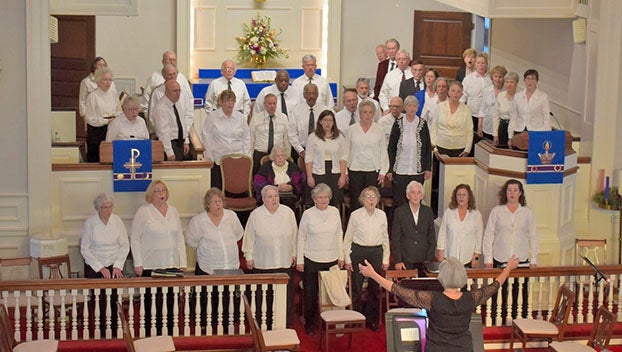Happy To Be Here: The Wind Blows
Published 4:40 pm Thursday, April 6, 2023
|
Getting your Trinity Audio player ready...
|
When I think of the wind, I usually picture gentle breezes. I hear it whisper secrets about the places it has been. I watch it stir flowers. I listen to the rustle of leaves. This sort of wind beckons. It invites me to come and play.
But the wind is fickle. Sometimes, it gets angry. It shakes and breaks whatever it can find. It topples trees and rips singles from roofs. It downs utility lines. Violent winds cause enormous destruction and loss of life.
Several years ago, I read Defining the Wind, by Scott Huler (published in 2004). According to Huler, the ancient Greek philosopher Aristotle believed the wind came from the earth’s exhalations, drawn up from the ground by the sun and then put into motion by the same celestial sphere that caused the stars to move. More than two millennia later, insight hadn’t progressed much. One explanation from 1684 attributed wind to the breath of seaweed.
Scientifically minded researchers eventually pieced together a more accurate, if less poetic, explanation. We now know that the wind comes from atmospheric movement driven by changes in air pressure. These variances begin when our planet’s round shape causes incoming solar radiation to reach different regions at different angles. This results in an unequal heating of the earth’s surface and atmosphere. Warmer air is less dense than colder air, so the warm air rises, creating an area of lower pressure under it. The earth’s spin about its axis sets the atmosphere in motion, and geographical features steer the air as it moves.
Sir Francis Beaufort, a nineteenth century Admiral in the British Royal Navy, had other concerns on his mind when he began investigating the wind. Like many sailors of his day, he didn’t care as much about where the wind came from as he did about how mariners could use it to their best advantage. With his attention focused on such practical matters, he developed tools for standardizing weather reports and categorizing the wind’s effects on ships at sea.
Beaufort’s lists of wind-related observations form the basis of the Beaufort Wind Force Scale. The scale includes numbers from zero to twelve (sometimes with appended extensions up to seventeen for severe storms). Each number combines an identifying name and brief description.
The scale begins with zero, “calm, smoke rises vertically.” My favorite winds fall in a range between two and five. Two is a light breeze, “wind felt on face; leaves rustle; wind vane moves.” Three and four are gentle and moderate breezes. Five is a fresh breeze where “small trees with leaves begin to sway, crested wavelets form on inland waters.”
Things start to get scary with six, a strong breeze, which involves large branches moving, overhead wires whistling, and umbrellas becoming difficult to control. Higher numbers move into gales, then storms that uproot trees and cause widespread damage. Twelve is a hurricane.
Today’s weather forecasters rate hurricanes using the five categories of the Saffir-Simpson scale, which was originally developed in the 1970s by a civil engineer (Herbert Saffir) and a meteorologist (Robert Simpson). Category one begins at 74 mph (one mph different from Beaufort’s scale); category two begins at 96 mph. Category three (beginning at 111 mph) and higher are considered major hurricanes that cause devastating to catastrophic wind damage. The National Hurricane Center explains that hurricanes in all five categories are dangerous, damage-inducing storms that can also cause storm surges, floods, and tornadoes.
According to the National Weather Service, the original Fujita Scale, developed by Dr. T. Theodore Fujita in 1971, divided tornado intensities into six categories ranging from zero (a gale) to five. F1 was described as a weak tornado, 2 strong, 3 severe, 4 devastating, and 5 incredible. An Enhanced Fujita Scale (EF) was adopted in 2007. It still rates tornados from zero to five, and its classifications consider estimated 3-second wind gusts along with observed wind-related damage. EF 5 tornados have winds that exceed 200 mph.
When storms come, I plan to seek shelter. But I also plan to let go of fear. On the vast majority of days, the wind blows kindly, and I don’t want to miss a single beautiful day.
Karen Bellenir has been writing for The Farmville Herald since 2009. Her book, Happy to Be Here: A Transplant Takes Root in Farmville, Virginia features a compilation of her columns. It is available from PierPress.com. You can contact Karen at kbellenir@PierPress.com.





